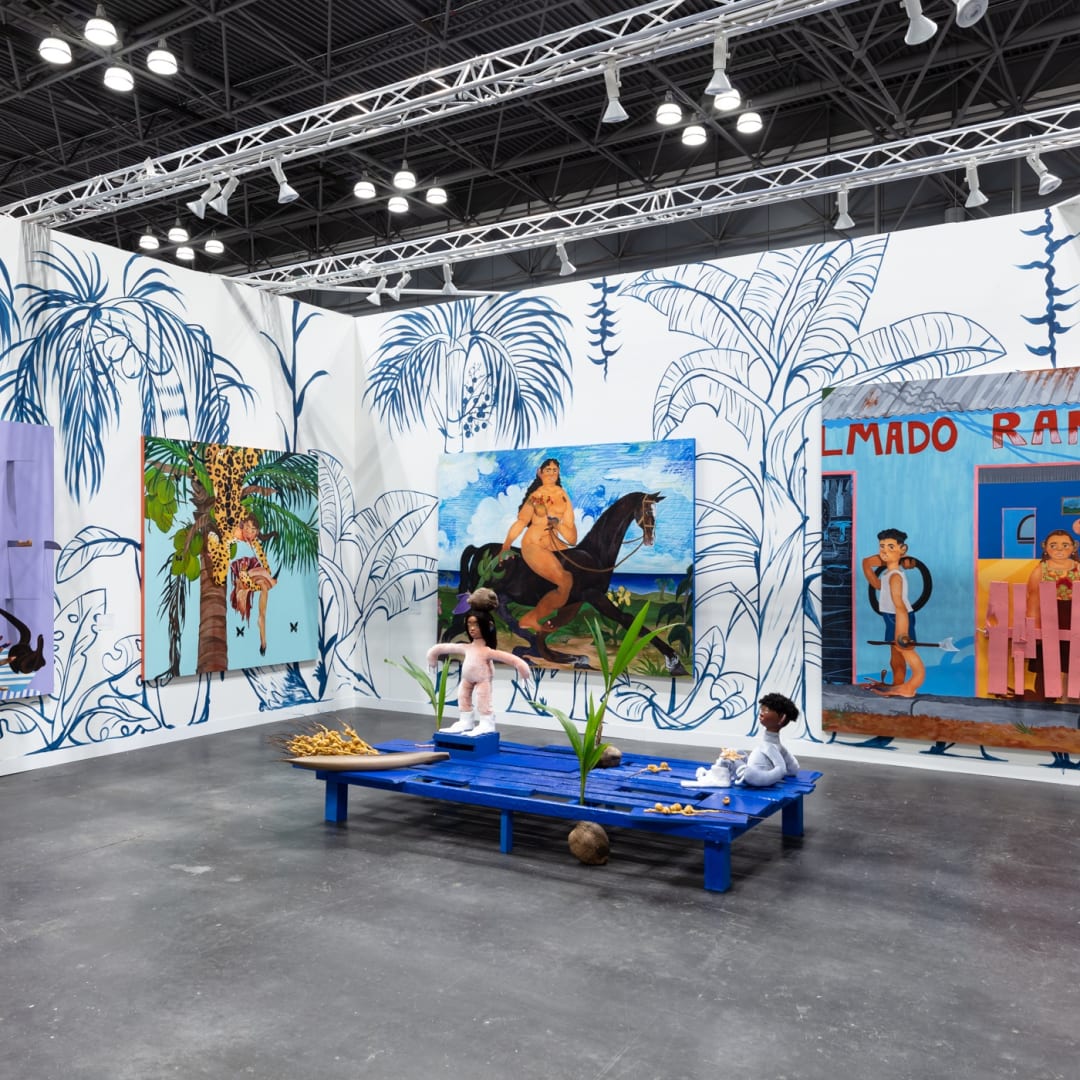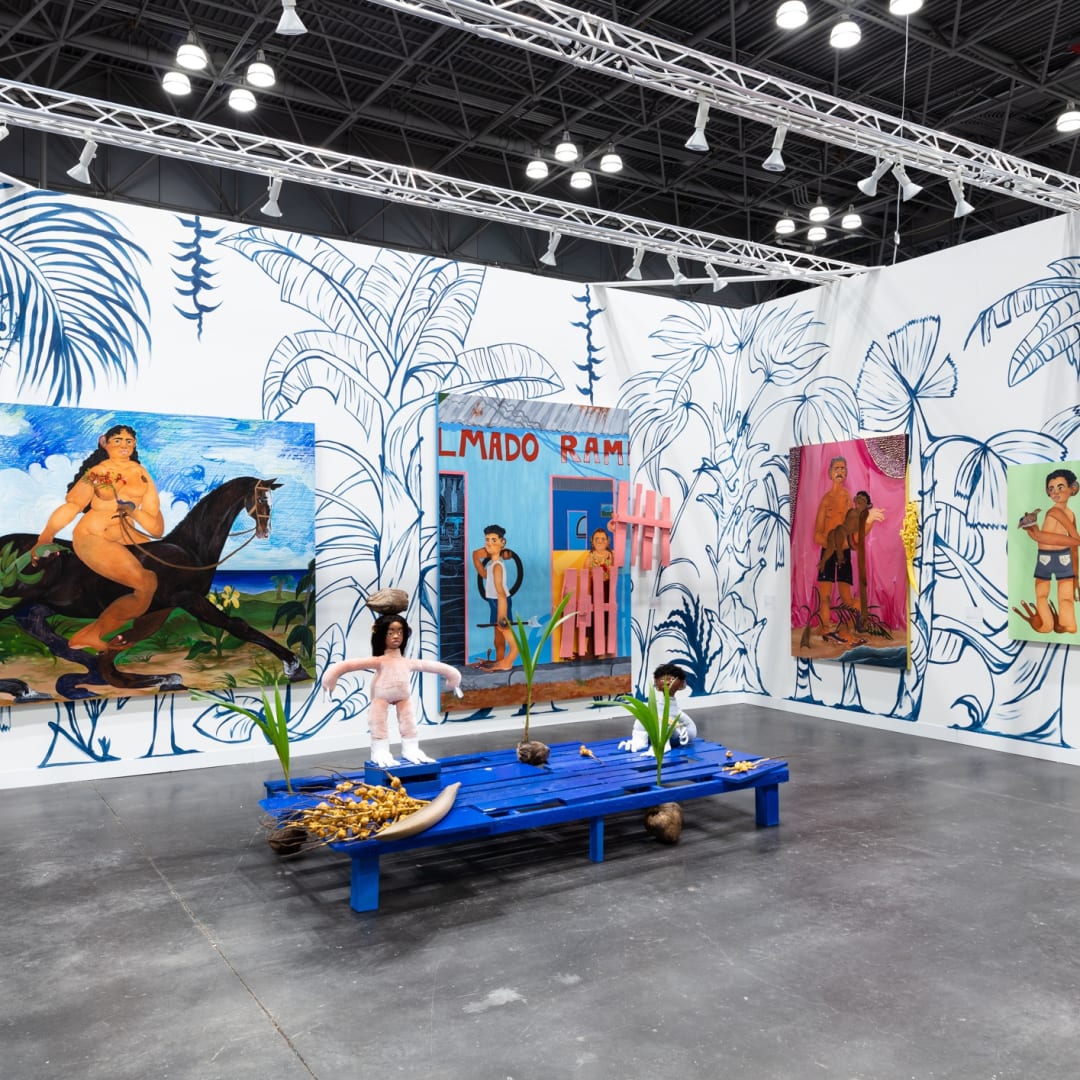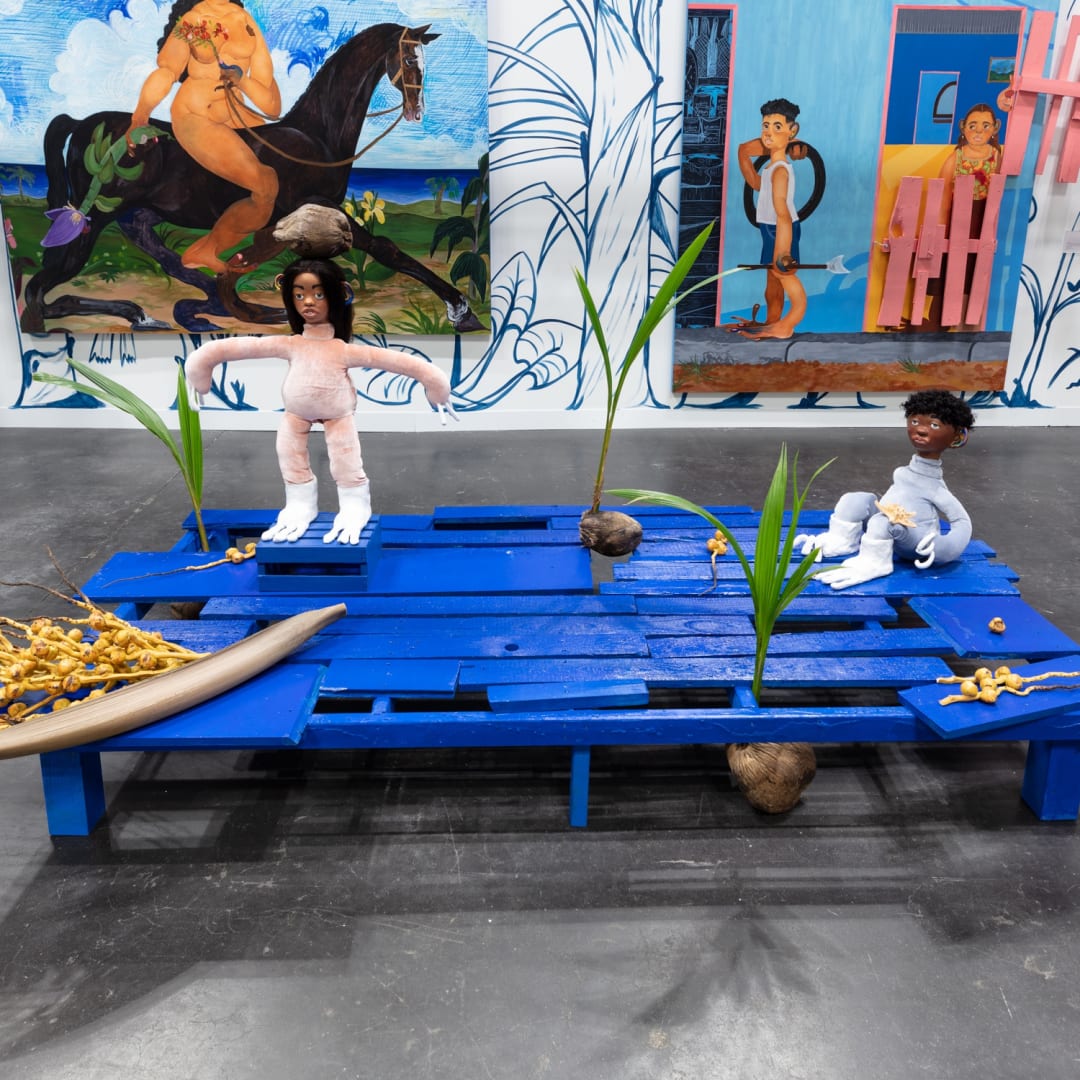Thierry Goldberg Gallery is pleased to present DELONIX REGIA, a solo presentation of new work by Bony Ramirez at The Armory Show from September 9 through 12.
Spanning painting, sculpture, and an accompanying mural, DELONIX REGIA offers a survey of Bony Ramirez’s unique visual vocabulary. The artist’s latest body of work takes its name from the “flame of the forest”, a bright red flower that is native to the Caribbean. Ramirez’s depictions of lush landscapes and local flora and fauna celebrate the diverse cultures and traditions of the Caribbean, while subverting the stereotypes that are often placed upon the region.
Ramirez adheres life-size paper figures onto painted wood panels, situating them within ornate and symbolic environments. The subjects appear playful and animated, yet they carry a sinister undertone; characterized by disproportionate limbs, contorted hands, feet, and torsos, ears filled with rainbow swirls, and large, doll-like eyes. Plantains, coconut trees, seashells, and machetes emerge as recognizable symbols of the Dominican Republic, where the artist spent the first decade of his life. By placing these objects in juxtaposition to his bold and unsettling figures, however, Ramirez complicates the readability of his works and challenges the viewer to look beyond the one-sided, objectifying gaze of tourism.
A feminine figure seated upon a horse in Delonix Regia (2021) holds a plantain and the eponymous red flower in her hands, surrounded by sparse green hills and a sliver of ocean jutting up against an expansive blue sky. The figure’s regal and empowered stance exudes the same opulence that one might find in the depiction of a duke or monarch, yet the setting is pared back and raw. Delonix Regia (2021) imagines a pre-colonial world in which Caribbean lineages have agency over their own land. ‘What if the atrocities of colonialism had never occurred?’, the painting seems to ask. What would this region look like? Who would be its ruler?
The figure in MACHETAZO! (2021) carries a similar air of confidence. Serious and unflinching, she looks directly at the viewer, machetes piercing the canvas around her. Her dark hair cascades down her back and onto the floor, and a grimacing mask lies at her feet. Though this type of mask is used during Carnival celebrations across the Caribbean, it also refers to the African traditions that have survived colonization and the historical erasures that have followed in its wake. The twisted visage bears traces of the violence, anxiety, and trauma that we find in the paintings of Francis Bacon or Francisco Goya, creating a poignant contrast with its soft lavender background.
Ramirez shares a more personal narrative with The Last Day, Ultimo Día En El Campo (2021). The work depicts the artist’s childhood home and the adjacent colmado (a local convenience store or bodega) that was run by Ramirez’s family. Having left the Dominican Republic abruptly, without the chance to say a proper goodbye, Ramirez paints his home from memory. Though these spaces are filled with the joy and innocence of childhood, The Last Day, Ultimo Día En El Campo (2021) speaks to the sense of loss and severance that characterizes so many immigrant experiences. Ramirez’s remembered home acts as a space of emotional solace, as well as a source of ongoing heartbreak and longing.
Bony Ramirez (b. 1996, Tenares, Salcedo, Dominican Republic) lives and works in Perth Amboy, NJ. He has had solo exhibitions at Thierry Goldberg Gallery, New York, NY and Bradley Ertaskiran, Montréal, Canada. Ramirez has participated in group exhibitions at Jeffrey Deitch, Los Angeles, CA; Company Gallery, New York, NY; Luce Gallery, Torino, Italy; Nino Mier Gallery, Los Angeles, CA; Regular Normal, New York, NY; Thierry Goldberg Gallery, New York, NY; Zücher Gallery, New York, NY; Anna Zorina Gallery, New York, NY; and The Wassaic Project, Wassaic, NY, amongst others.
The Armory Show: Bony Ramirez: DELONIX REGIA
September 9 - 12, 2021




